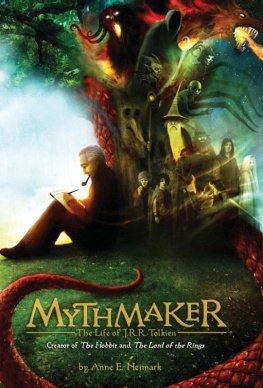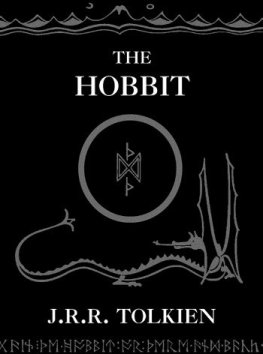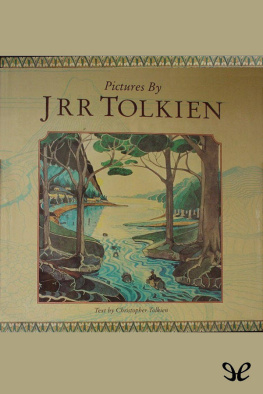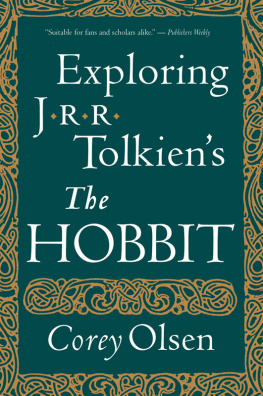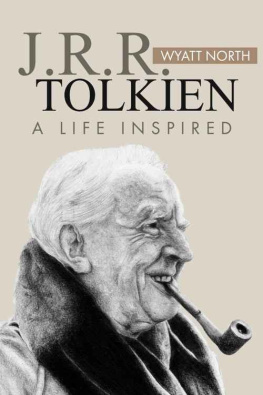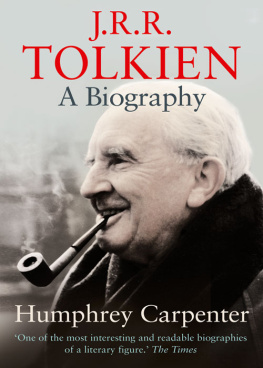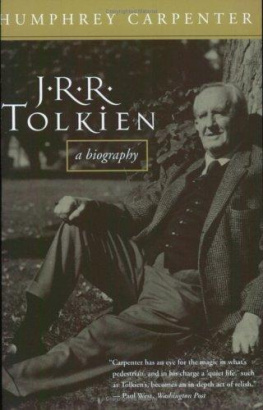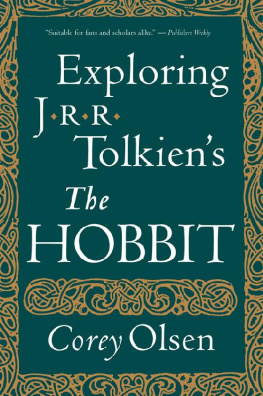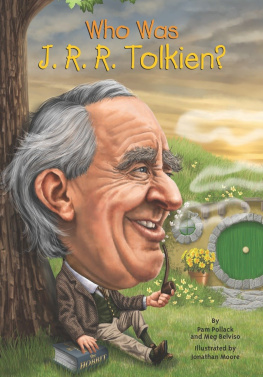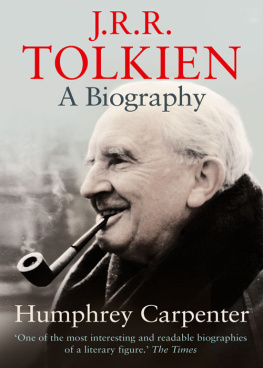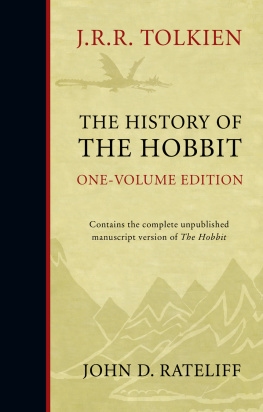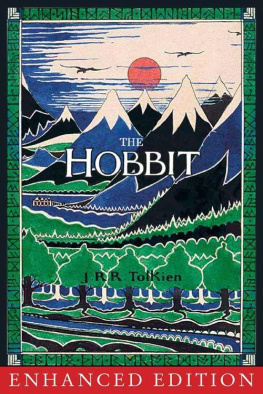Copyright 1996, 2012 by Anne Neimark
All rights reserved. For information about permission to reproduce selections from this book, write to or to Permissions, Houghton Mifflin Harcourt Publishing Company, 3 Park Avenue, 19th Floor, New York, New York 10016.
Harcourt Childrens Books is an imprint of Houghton Mifflin Harcourt Publishing Company.
hmhco.com
THE LIBRARY OF CONGRESS HAS CATALOGED THE PRINT EDITION AS FOLLOWS:
NEIMARK, ANNE E.
MYTHMAKER: J.R.R. TOLKIEN/ANNE E. NEIMARK: ILLUSTRATED BY BRAD WEINMAN.
P. CM.
SUMMARY: FOLLOWS THE LIFE AND WORK OF THE RENOWNED FANTASY WRITER, CREATOR OF HOBBITS, MIDDLE-EARTH, AND The Lord of the Rings.
1. TOLKIEN, J.R.R. (JOHN RONALD REUEL), 18921973BIOGRAPHY JUVENILE LITERATURE. 2. AUTHORS, ENGLISH20TH CENTURYBIOGRAPHY JUVENILE LITERATURE. 3. FANTASTIC LITERATUREAUTHORSHIPJUVENILE LITERATURE. 4. MIDDLE-EARTH (IMAGINARY PLACE)JUVENILE LITERATURE. [1. TOLKIEN, J.R.R. (JOHN RONALD REUEL), 18921973. 2. AUTHORS, ENGLISH.] I. WEINMAN, BRAD, ILL. II. TITLE.
PR6039.032Z697 1996
828'.91209dc20 96-4196
ISBN 978-0-15-298847-0
ISBN 978-0-547-99734-6 (updated hardcover edition)
e ISBN 978-0-547-99736-0
v3.0118
To Alyssa Ashley Neimark
May all your life be filled with magic and wonder
Introduction
G ENERATION AFTER GENERATION OF READERS discovers J.R.R. Tolkien. His amazing mythologygrand and unique in scopefills his popular, award-winning fantasy books: The Hobbit, The Lord of the Rings, and The Silmarillion. Tolkiens world of Middle-earth seems, in many ways, familiar to us. But just when we feel most comfortable with it, were shocked, terrified, or awed by his abundance of remarkable creatureselves, trolls, goblins, giants, dragons, Ents, Balrogs, and Orcs.
In 1936, when the ten-year-old son of an English publisher urged his father to publish The Hobbit, J.R.R. Tolkiens fantasy writing began its journey toward best-seller lists in dozens of countries. The Lord of the Rings, translated into more than thirty-five languages, is one of the most popular works of fiction in publishing history. It has sold many millions of copies, prompting radio, TV, and movie adaptations; video games; a musical; a symphony; calendars; artwork; postcards; and dolls.
Tolkiens heroes are often ordinary folk, bravely fighting the timeless battle between Good and Evil. Ive always been impressed, Tolkien once said, that we are here, surviving, because of the indomitable courage of quite small people against impossible odds.
Born in 1892 in Bloemfontein, South Africa, Tolkien endured a tragic and poverty-stricken childhood. He was educated through scholarships and the support of a kind but stern priest, and graduated from Englands Oxford University with impressive achievement in philology, the study of language. Later, as an Oxford professor, Tolkien won academic fame by publishing renowned works and inventing his own languages. He was, however, far more than a scholar. Within him burned an imagination so startling and unparalleled that it burst forth into his unforgettable tales of moral courage, danger, and beauty (often causing colleagues to discredit him). Tolkiens life, spent mostly in England, brought him both darkness and joy; his response was to create the magic and mythology of Middle-earth, founded on his love of language and using his knowledge of Old Norse, Germanic, and Icelandic myths. Most of his poems and stories show a reverence for the past and for uncorrupted land. And even though his villains may not be totally vanquished, it is Tolkiens heroes who endure.
J.R.R. Tolkien took fantasy, myth, and fairy tales very seriously, finding them as important for adults as for children. Fantasy, he wrote, remains a human right. This biography shows us the fascinating and inspiring man behind his mythology.
Chapter 1
T HE TALL GRASS OF THE desert farm in Bloemfontein, Africa, almost hid him from view. His nurse screamed his name, her voice chasing him, but he kept running from hera pale three-year-old child in a white blouse and shorts.
He loved the prickle of wild grass against his face and the bright clusters of flowers. Stopping to bend down, he yanked off his shoes and socks. Ronald! his nurse shouted, but she was still far behind him, her dark face wet from the sun.
He ran with bare feet pummeling the dry earth, stalks of grass bending and cracking near their roots. Now he could see the camelthorn tree on the hill! Once, his father had taken him to this nearby farm, lifting him onto a limb of the tree. Hed wrapped his legs around the warm, scratchy bark. We dont have many trees in South Africas desert, his father had said. Thats why I like planting them at home.
A fiery pain stabbed through Ronalds foot. Gasping, he toppled sideways onto the ground, his small arms flailing against his shorts. No! he blurted out, his eyes filling with tears. Something was darting away over the dirta black, furry thing with crooked legs, fearless as the snakes with tongues that slid across his parents garden.
Before long, his nurse was upon him, dropping to her knees. Scooping him into her lap, she saw the huge spider waiting slyly atop a bush. Tarantula! she shrieked, babbling in both English and Afrikaans. John Ronald Reuel Tolkien! You shouldnt have run off.
The nurse put Ronald on his back under the scorching sun. She lifted his leg upward, grabbed his wounded foot, and pulled it toward the bright red of her mouth. Moaning and cooing, she sucked the spider venom from the swelling beneath his toes. Wincing, Ronald tilted his head so that he could glimpse the base of the camelthorn tree. Take me to the tree, he said. I can climb it!
Im taking you home, Master Tolkien! You can rest on the balcony upstairs and look at the trees your father planted.
Carrying him like a large sack of corn, his socks and shoes bulging from her pockets, the woman awkwardly loped away from the farmland and hurried down a road near her native kraal, or village. Ronalds foot stung even more as it touched the starched pleats of her apron; cringing, he imagined spiders crawling out of her hair. At Bloemfonteins market square, not far from his home, he saw houseboys on their daily errands. May I have an apple? he asked, his voice trembling, but his nurse bypassed the stalls and ran over the steps of the Raadzaal, Bloemfonteins most important government building.
Mrs. Tolkien! Mrs. Tolkien! the nurse called in singsong cadence when, a few moments later, she dashed with Ronald into the Tolkien house. A tarantula bit your son!
Mabel Tolkien hurried from the kitchen, her long skirt hoisted above her ankles, her face drawn from the days excruciating heat. Seeing the crimson welt on the bottom of Ronalds foot, she took him from the nurses shoulders. Africas playground, she whispered sadly to herself, then asked Isaak, the houseboy, for calamine lotion and bandages from the cupboard.
Ronalds foot was swabbed with pink lotion and covered with gauze. It was a spider as big as a dragon! he told his mother. He asked to sit on the balcony with his favorite book of fairy tales, the one with pictures of fire-breathing dragons and goblins, but his mother only reluctantly agreed. Always, she fretted over his health, finding him too thin and frail for the relentless sun.
From a balcony chair, Ronald opened the book he could not yet read, caught up by an etching of an armored knight on horseback whose sword menaced a two-headed dragon. Below, in the Tolkien garden, trees planted by Ronalds fathercypresses, firs, and cedarsrustled as if the brave knight had just ridden past them. Ronald stood up, putting his weight squarely on both feet, defiant against the soreness under the gauze. Perhaps, he thought, he was crushing spiders with his feet and might, himself, be a brave knight. He decided he would ask Isaak, the houseboynot his nurse, who always said No, or his mother, who often looked sadto take him back to the desert farm in the morning so that, even with his bandaged tarantula bite, he might finally climb the camelthorn tree.
Next page
